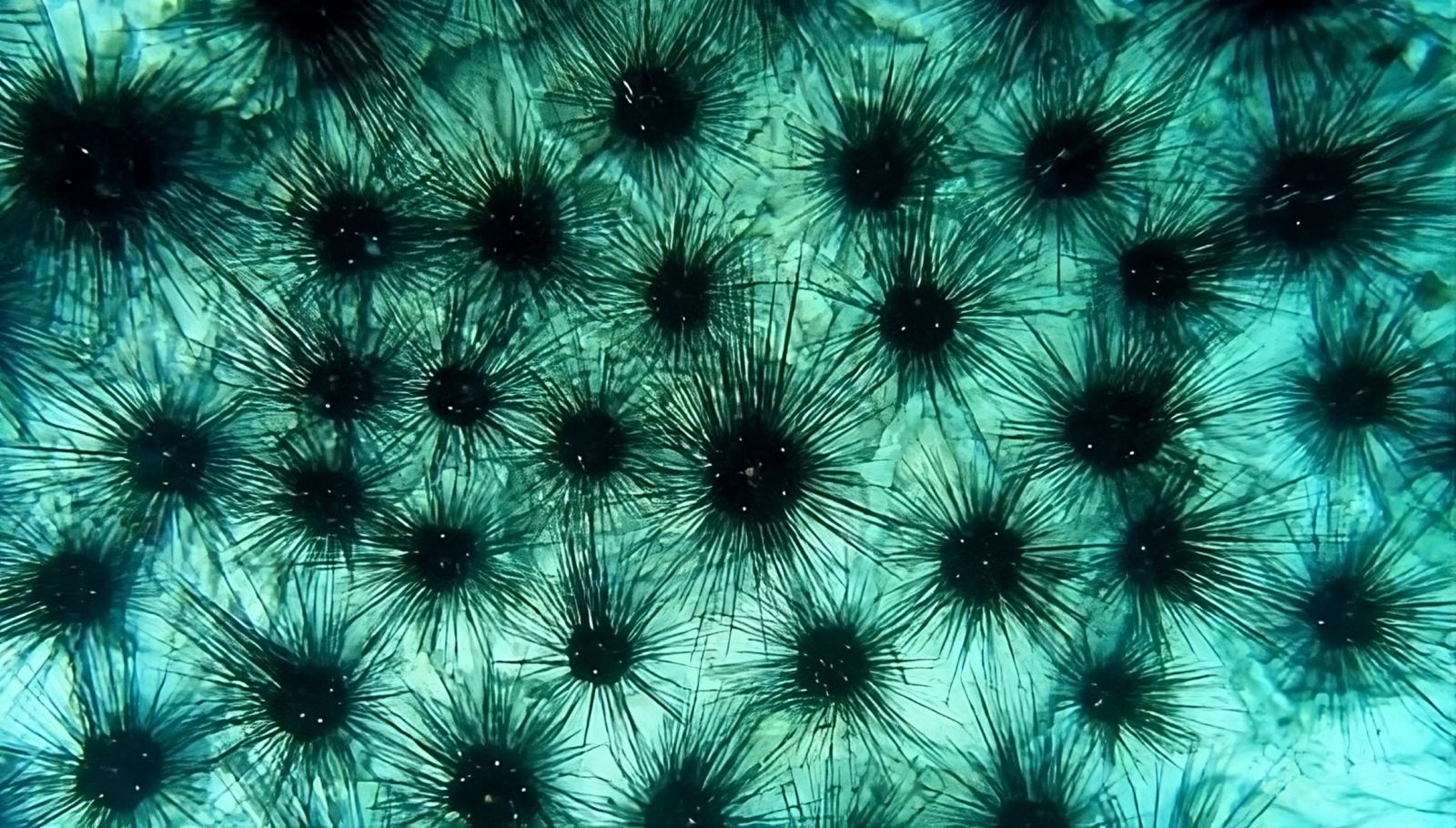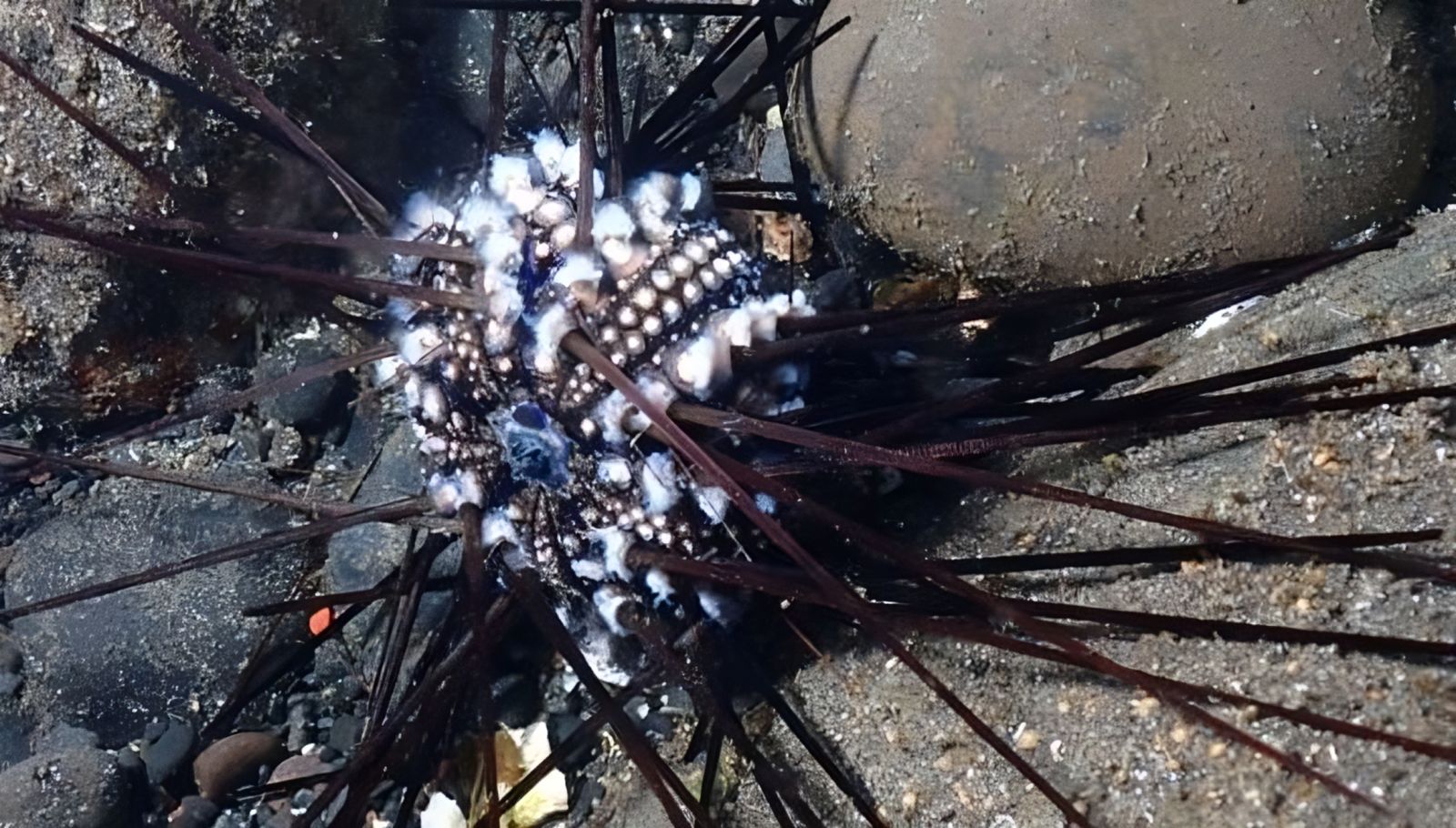Follow us on Google News (click on ☆)
This alarming discovery concerns a ciliate parasite, identified as the cause of mass mortality of sea urchins in the Red Sea and near the island of Réunion in the Indian Ocean. Scientists now fear a spread to the Pacific Ocean, where some of the world's largest coral reefs are located.

Diadema group in Zanzibar.
Photo credit: Tel Aviv University.
Led by Dr. Omri Bronstein from Tel Aviv University, the study published in Ecology sheds light on a major ecological disaster. Sea urchins play a crucial role as 'gardeners' of the reefs, preventing the proliferation of algae that could smother corals. A similar disease had already decimated sea urchin populations in the Caribbean in 1983, with disastrous consequences for coral reefs.
In 2022, the disease reappeared in the Caribbean, and in 2023, Dr. Bronstein observed mass mortality of long-spined sea urchins in the Red Sea. Mortality rates reached up to 100% in some areas, signaling an unprecedented ecological emergency.
Using genetic tools, the team confirmed that the same parasite is responsible for the mortalities in the Red Sea and near the island of Réunion. This discovery highlights the pandemic nature of the disease, with mortality rates exceeding 90% in regions critical for coral reefs.
To track the progression of this pandemic, Dr. Bronstein has established an international network of collaborators. This network aims to monitor mortality events and collect samples for analysis, in the hope of understanding and limiting the spread of the pathogen.
In parallel, a sea urchin breeding program has been launched at the Jerusalem Aquarium in Israel, in collaboration with the Biblical Zoo and the Israel Nature and Parks Authority. This program aims to create a genetic reserve for the rehabilitation of affected populations and to develop early detection tools for the disease.

Infected sea urchin in Réunion.
Photo credit: Jean-Pascal Quod.
Dr. Bronstein and his team are also working on 'underwater COVID tests' for sea urchins, allowing for early detection of the pathogen from seawater samples. These efforts represent hope for the preservation of coral reefs in the face of this global threat.
What is the role of sea urchins in coral ecosystems?
Sea urchins play a crucial role in coral ecosystems by acting as 'gardeners'. They feed on algae, preventing their excessive proliferation that could smother corals. This symbiotic relationship allows corals to receive sufficient light for their growth and survival.
Without sea urchins, algae can dominate the reefs, transforming these biodiversity-rich ecosystems into algae-dominated areas. This change has disastrous consequences for marine wildlife that depend on coral reefs for their habitat and food.
The disappearance of sea urchins can therefore lead to a rapid decline in the health of coral reefs, with long-term impacts on marine biodiversity and human communities that depend on these ecosystems for their livelihood and coastal protection.
How do climate changes influence marine diseases?
Climate changes can exacerbate the virulence of marine pathogens by altering environmental conditions. Rising water temperatures, ocean acidification, and changes in marine currents can stress marine organisms, making them more vulnerable to diseases.
These changes can also favor the proliferation of pathogens, creating conditions conducive to their growth and spread. For example, higher temperatures can accelerate the life cycle of parasites, increasing their reproduction rate and their ability to infect new hosts.
Furthermore, climate changes can facilitate the dispersion of pathogens across oceans, by altering the migration routes of marine species and increasing interactions between populations that were previously isolated. This can lead to the emergence of new diseases and the re-emergence of old diseases in regions where they were previously absent.